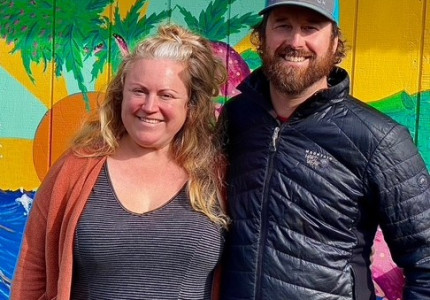Heather Haglund, her partner Steve and their sons have a long, local history with cannabis, and the traditions that were borne out of decades of family farming have come to fruition with the successful growth of their business.
Located north of Willits, the family purchased their property in 2004, but their cannabis roots go back decades.
“I’ve been growing cannabis since I was nine years old, which was in 1979,” smiles Steve, a legacy cultivator who grew in Southern Humboldt County.
“My stepdad was a guerilla farmer. He’d hollow out manzanita patches for the plants, doing it the old-school way. When I grew up, I didn’t want to work for Dad, so for a few years I got a job burying phone cable. I was living in Redway, renting a duplex that I paid $375 a month for. I didn’t need much money.”
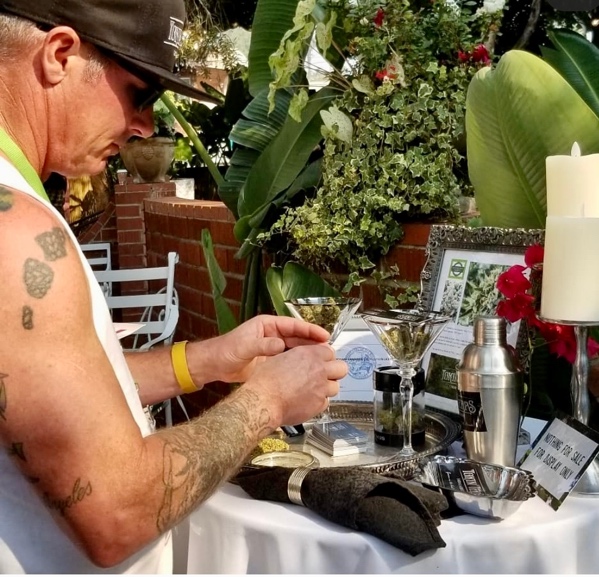 “I moved to Alderpoint in 1992,” says Heather. “I was the new girl in town. I had never worked in the industry, but I’d been told all the horror stories. Lucky for me, I was introduced to cannabis in a good way. When I met Steve, I made us live in town. In those days, you really had to be careful. We were really in the weed trenches back then.”
“I moved to Alderpoint in 1992,” says Heather. “I was the new girl in town. I had never worked in the industry, but I’d been told all the horror stories. Lucky for me, I was introduced to cannabis in a good way. When I met Steve, I made us live in town. In those days, you really had to be careful. We were really in the weed trenches back then.”
Steve recalls the horrendous “helicopter stuff” that is part of every early cannabis grower’s fever dreams. “In Alderpoint, they killed my sister’s horse. They broke his leg. The saving grace was we were able to sue CAMP,” Steve continues.
Heather embodies the ethics of so many early-era farmers, who are in love with the plant, not the profits.
“We were never greedy. We wanted to have the lifestyle. We didn’t want to be on a 9-to-5 schedule, and we enjoyed being able to bring our kids to work. On the downside, it was rough not getting paid for six months,” Heather smiles.
There were many more opportunities for small farmers to survive and thrive prior to the passage of Proposition 64.
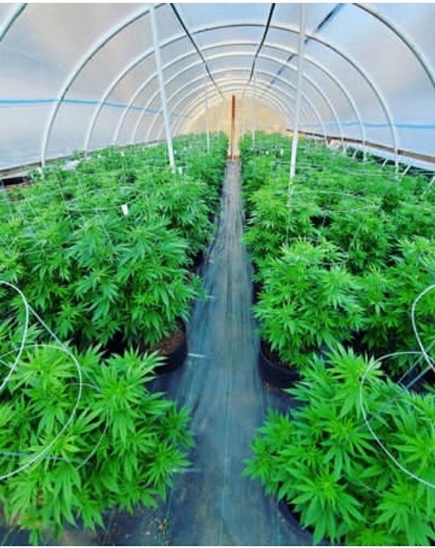 “During the Prop 215 days, between 1998 and 2017, we were dedicated to getting cannabis to the people through a medicinal dispensary located in San Francisco. They expanded into the Los Angeles area where they had three stores. We were our own distributor for three years- driving back and forth at least twice a month. I’m glad we got through those stressful driving days,” smiles Heather. “Unfortunately, that dispensary did not survive the passage of Prop 64, so we had to make new connections.”
“During the Prop 215 days, between 1998 and 2017, we were dedicated to getting cannabis to the people through a medicinal dispensary located in San Francisco. They expanded into the Los Angeles area where they had three stores. We were our own distributor for three years- driving back and forth at least twice a month. I’m glad we got through those stressful driving days,” smiles Heather. “Unfortunately, that dispensary did not survive the passage of Prop 64, so we had to make new connections.”
In 2004, a friend’s aunt asked if the family was interested in purchasing a 140-acre property in Willits. “We were able to start making payments. The first thing we did was build a tiny cabin. We had to walk through the mud to take a shower and took snow off the toilet to use it,” Steve smiles. “But our sons were one and four. They were ready for a change,” says Heather. “It was either here or Alderpoint Road. I think we made the right decision.”
Because of their young children, Heather and Steve grew only small gardens. “Then it was 2018. We were at a crossroads. We figured, we’ve made it this far,” Steve continues. “Our first year was great. But we did have to put in a new well because our shake began throwing arsenic. Luckily it didn’t uptake into the flower, and now we have a very reliable ozone generation system, which helps preserve the water, increases our yield and has helped us back off the fertilizer.”
“We call it magic water,” smiles Heather.
 The one disadvantage of the ozone generation system, notes Steve, is that it requires quite a bit of generator usage. “And with the regulations, cannabis farmers are only allowed 30 hours of generator use per month,” he notes.
The one disadvantage of the ozone generation system, notes Steve, is that it requires quite a bit of generator usage. “And with the regulations, cannabis farmers are only allowed 30 hours of generator use per month,” he notes.
Steve enlisted their three sons at an early age to learn the trade. “I remember asking our son Casey at nine to help harvest nine-foot plants. We started putting him on the excavator soon after.”
For decades, Steve has watched the fluctuations of consumer interest in one strain or another. “Back in the day, if you didn’t have Purple Urkle, you weren’t selling weed. Then everyone moved onto OG Kush. A long, long time ago, I figured out you could dep, but I never took advantage of it until 1996, when I tried my hand at it. I took some vegged plants, put them in a shed once a week and packed them back out into the field.
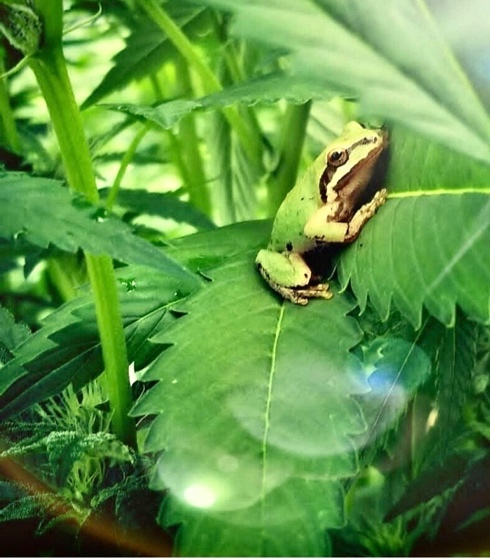 Some started stacking pretty good! That was White Rhino, and we were getting $3,200 a pound. People thought it was indoor, and we’d say it was grown under the sun, moon and stars.”
Some started stacking pretty good! That was White Rhino, and we were getting $3,200 a pound. People thought it was indoor, and we’d say it was grown under the sun, moon and stars.”
“I’ve never been into breeding. I just tried to follow the market. Nowadays, something that’s purple and gassy seems to be what people want.”
Choosing a name for the farm was difficult, says Heather.
“When we decided to go legal, we sat and talked for days and days. Many of the names we liked were taken. We thought the name should be unique- an action related to smoking weed. Then we thought about terpenes. I liked the fact that we could use the name to educate people about what terpenes are- how lavender, pine or citrus scents give off medicinal effects. We went with Tokin’ Terps.”
“Many people still don’t understand that the right terpene profile combined with a lower THC content still gets you high, while helping with other things,” says Steve.
The family’s farm is what Heather calls “an apothecary garden,” surrounded by other fragrant and healing herbs like rosemary, echinacea and lavender.
The family is looking for ways to expand their business. “In the future, we’re hoping to get into concentrates, but for now we’ve started Emerald Triangle Apparel. So many farms have great logos. Our site will bring all the farm logos together, and then take people to the farm’s page, where they can purchase apparel, and hopefully in the future, weed,” smiles Heather. “People have great designs but don’t necessarily have the money to get their merch out there. The project is in the embryo stages, but we’re hoping it’ll help us and our local farmers,” says Steve.
It’s been a long and sometimes perilous journey, but the family is hopeful about the future.
“I told Steve if you could make it with cannabis this year, you can make it through anything,” Heather concludes.
Tokin’ Terps has entered Pancakes into the Kure Mendocino Invitational. Visit Tokin Terps on Facebook and Instagram.


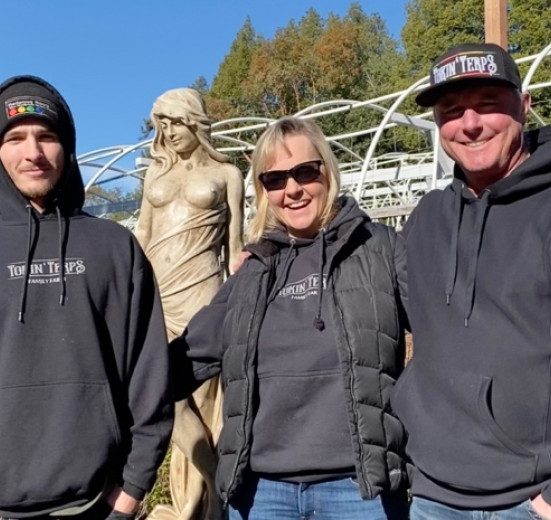

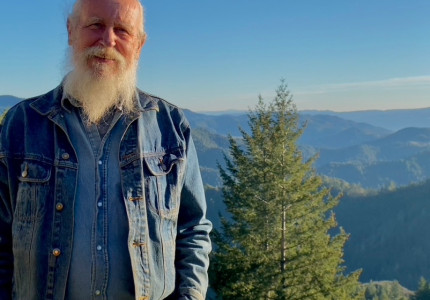
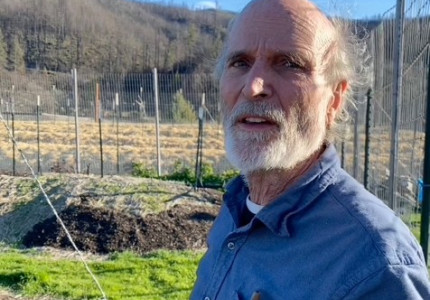
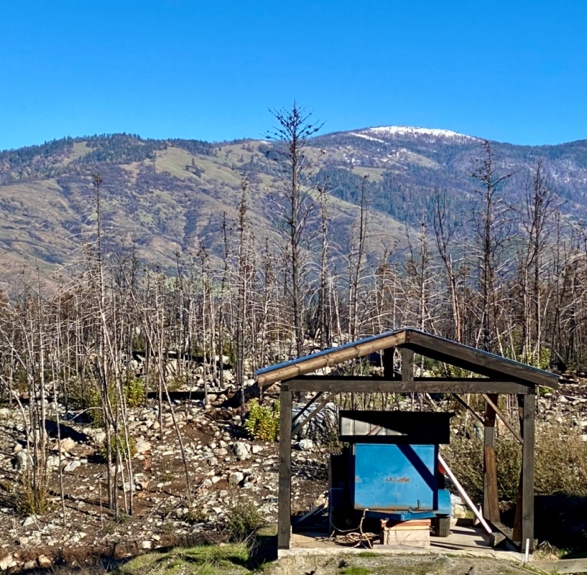 “I’ve only quit smoking three times since 1964,” he smiles.
“I’ve only quit smoking three times since 1964,” he smiles.